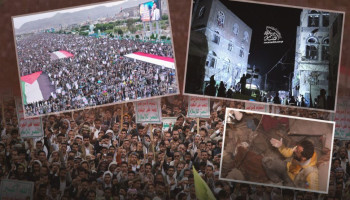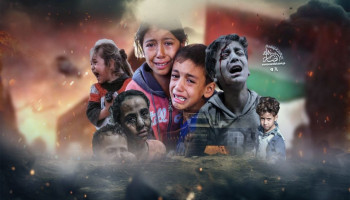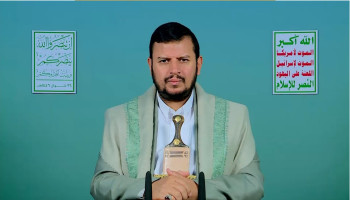The new academic year began, this week, in primary and secondary education schools in the capital, Sana'a, and all governorates, after being late due to the Coronavirus pandemic and the continued aggression against the Yemeni people.
With its walls pounded by artillery, roofs tore open and concrete beams in shreds, Al-Wehdah school lies in ruins as students return for the first day of Yemen's school year.
At the school near Taiz city, shattered by years of war, there are no doors or windows, let alone desks.
Instead, the students use old exercise books to jot down their lessons, as they sit in makeshift classrooms with a handful of teachers brave enough to join them under crumbling ceilings.
Yet in a country where nearly a third of children don't go to school at all, these are the lucky ones.
In Taiz city alone, 47 schools were "destroyed in the fighting," said Abdel Wassae Chaddad, provincial director of education.
"As far as destruction is concerned, we got the lion's share," he said.
Some children have to walk long distances to get there.
Lost generation
In Jamila al-Wafi's classroom, instead of a blackboard, she writes out the day's lessons in pencil on a supporting beam.
The students, seated on the floor, follow her attentively. They make notes carefully in their exercise books.
"We have 500 students," said Wafi, dressed in black and with her face covered, pointing to the neatly presented boys and girls, who study in separate classrooms.
"We call on the whole world and the business community to save the school," she said. "It could collapse at any moment."
In the courtyard, the children do some light exercises to start the day, and then queue up quietly waiting for classes to begin.
Some 2 million of Yemen's 7 million school-age children do not get to go to school at all, according to the United Nations.
Two-thirds have been damaged in attacks, while others are used by the army, as shelters for people forced from their home by the fighting, or simply closed in a country with few resources.
Some 3.3 million people have been displaced from their homes and 24 million, or more than 80% of the population, need aid, according to the U.N.
Last September, the Ministry of Human Rights revealed that the aggression destroyed more than 3722 educational facilities, noting that about 4,435,000 students had lost their right to education due to aggression and blockade.
According to websites.
A new school year begins in Yemen in light of the continuous suffering
الاثنين, 19 أكتوبر 2020







